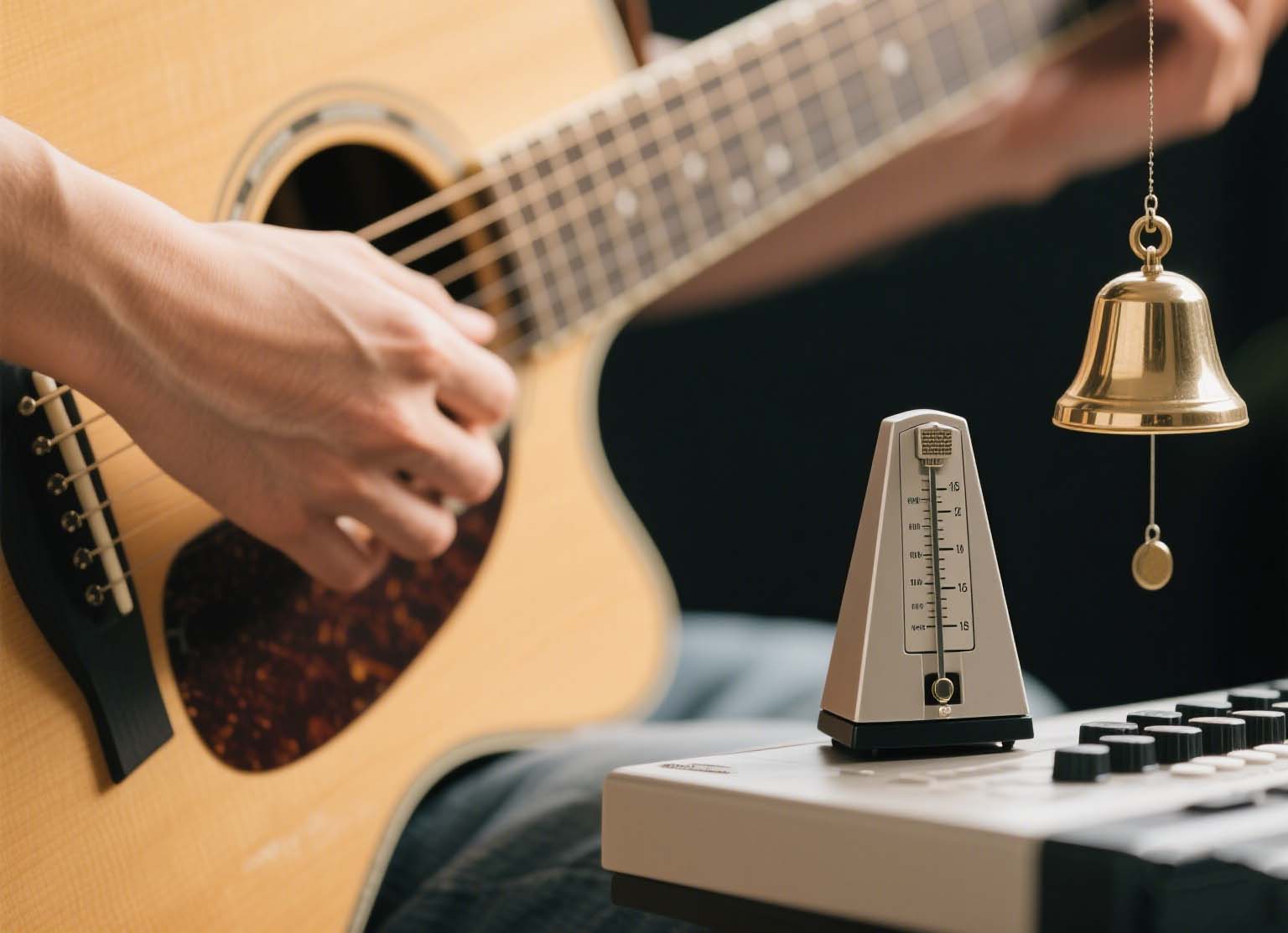A metronome is one of the most valuable tools for musicians of all levels. Whether you're just starting out or you've been playing for years, a metronome can help you develop a solid sense of timing and rhythm. In this article, we'll cover the basics of using a metronome effectively in your practice routine.
What is a Metronome?
A metronome is a device that produces a steady pulse (or beat) at a regular interval, measured in beats per minute (BPM). Traditional metronomes are mechanical devices with a pendulum that swings back and forth, while modern metronomes are often digital or app-based.
Why Use a Metronome?
Using a metronome during practice offers several benefits:
- Develops a consistent sense of timing
- Helps identify and correct rhythmic problems
- Builds technical precision
- Prevents rushing or dragging tempo
- Provides objective feedback on your playing
Getting Started: Basic Metronome Practice
Here's a simple step-by-step guide to incorporating a metronome into your practice routine:
1. Start Slow
Begin with a comfortable tempo where you can play accurately. For beginners, this might be around 60-70 BPM. It's better to start slower than you think you need and gradually increase the speed.
2. Count Along
Before playing, simply listen to the metronome and count along with it: "1, 2, 3, 4, 1, 2, 3, 4..." This helps you internalize the pulse.
3. Clap or Tap
Next, try clapping or tapping along with the metronome. Focus on making your claps precisely match the metronome clicks.
4. Play Simple Exercises
Start with simple exercises like scales or single notes. Make sure each note lands exactly with the metronome click.
5. Gradually Increase Tempo
Once you can play comfortably and accurately at your starting tempo, increase the speed by 3-5 BPM and repeat the exercise. Continue this process until you reach your target tempo.
Common Beginner Mistakes
Avoid these common pitfalls when practicing with a metronome:
- Starting too fast: Beginning at a tempo that's too quick will reinforce sloppy technique.
- Ignoring the metronome: Make sure you're actively listening to and following the metronome, not just having it on in the background.
- Practicing only with the metronome: While metronome practice is valuable, also practice without it to develop your internal sense of timing.
- Giving up too quickly: It takes time to develop good timing. Be patient with yourself.
Beyond the Basics: Next Steps
Once you're comfortable with basic metronome practice, you can try these more advanced techniques:
- Accent patterns: Practice with different accent patterns (e.g., emphasizing beats 2 and 4).
- Subdivision practice: Set the metronome to a slower tempo and play multiple notes per click.
- Displacement exercises: Have the metronome click on beats 2 and 4 (the "backbeat") instead of 1 and 3.
Remember, consistent practice with a metronome is key to developing solid timing and rhythm. Even just 5-10 minutes of focused metronome practice each day can lead to significant improvements in your playing.
In our next article, we'll explore more advanced metronome techniques for intermediate players. Stay tuned!





